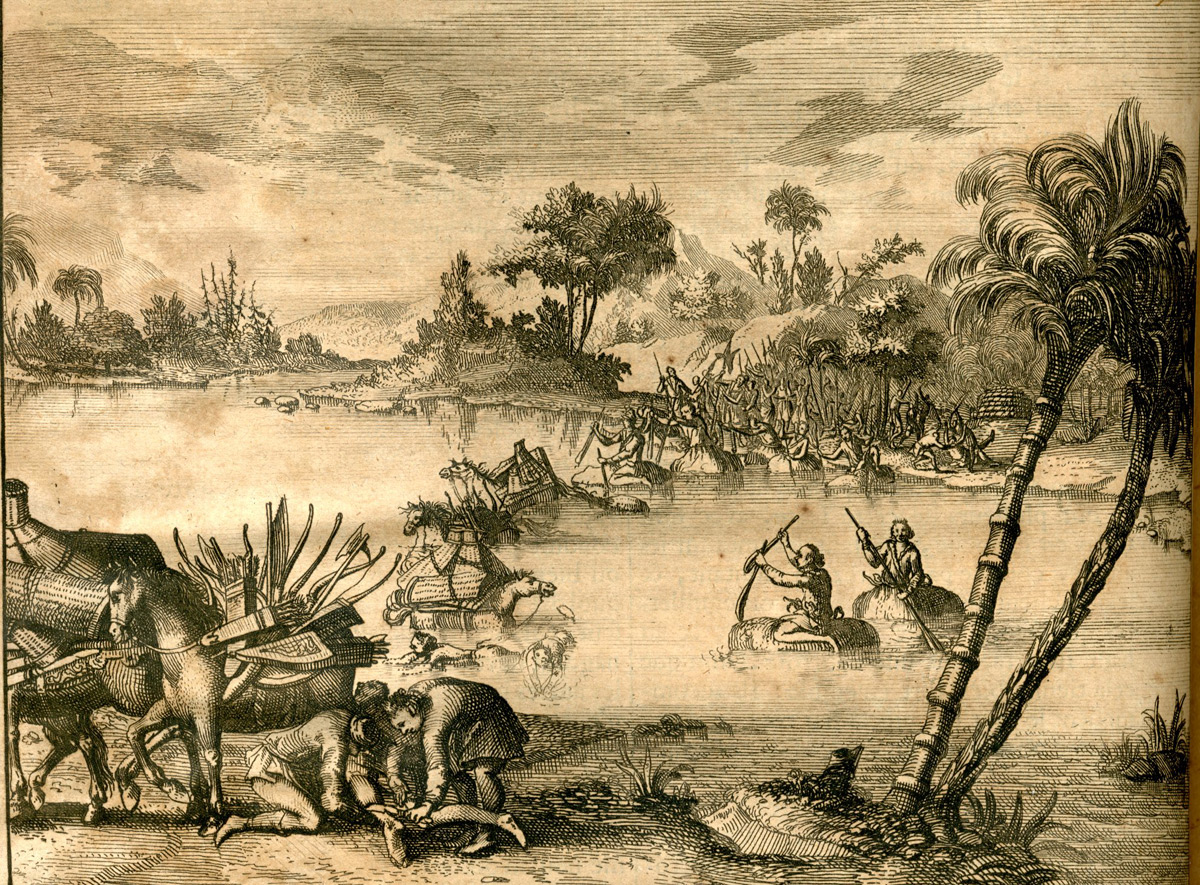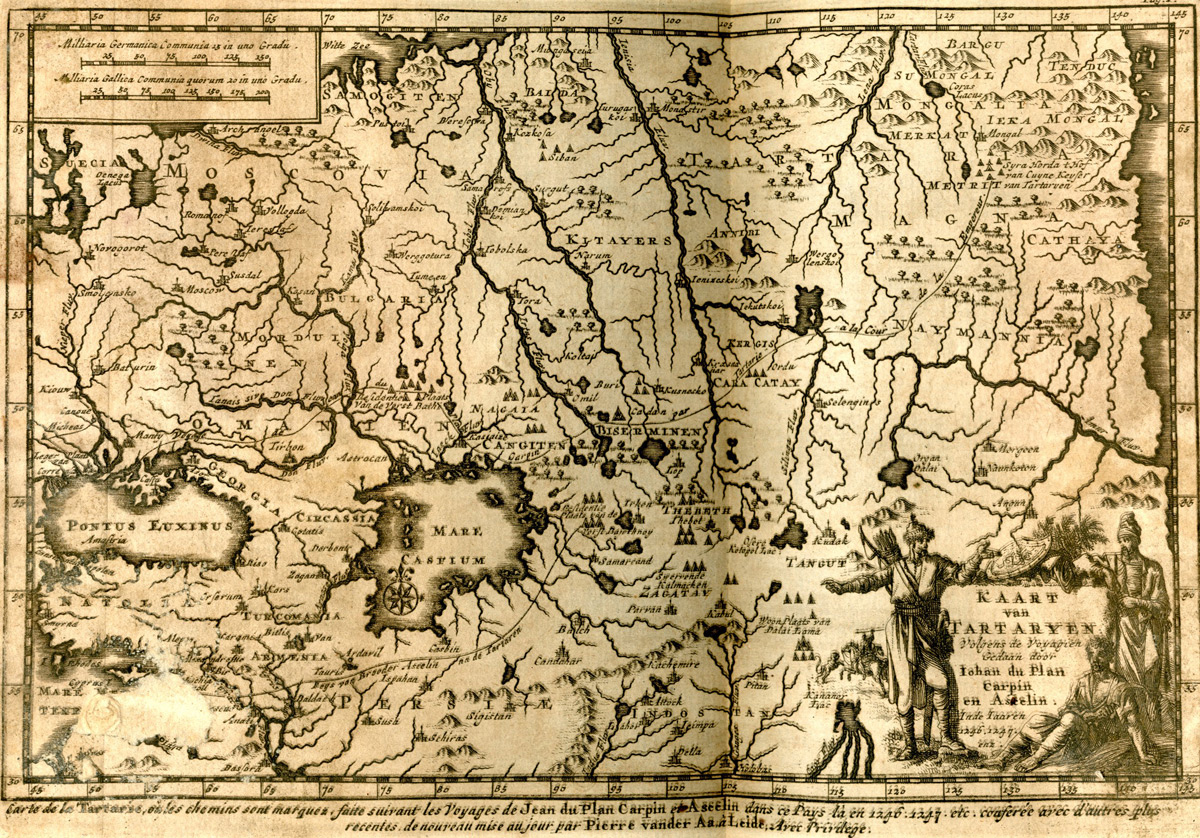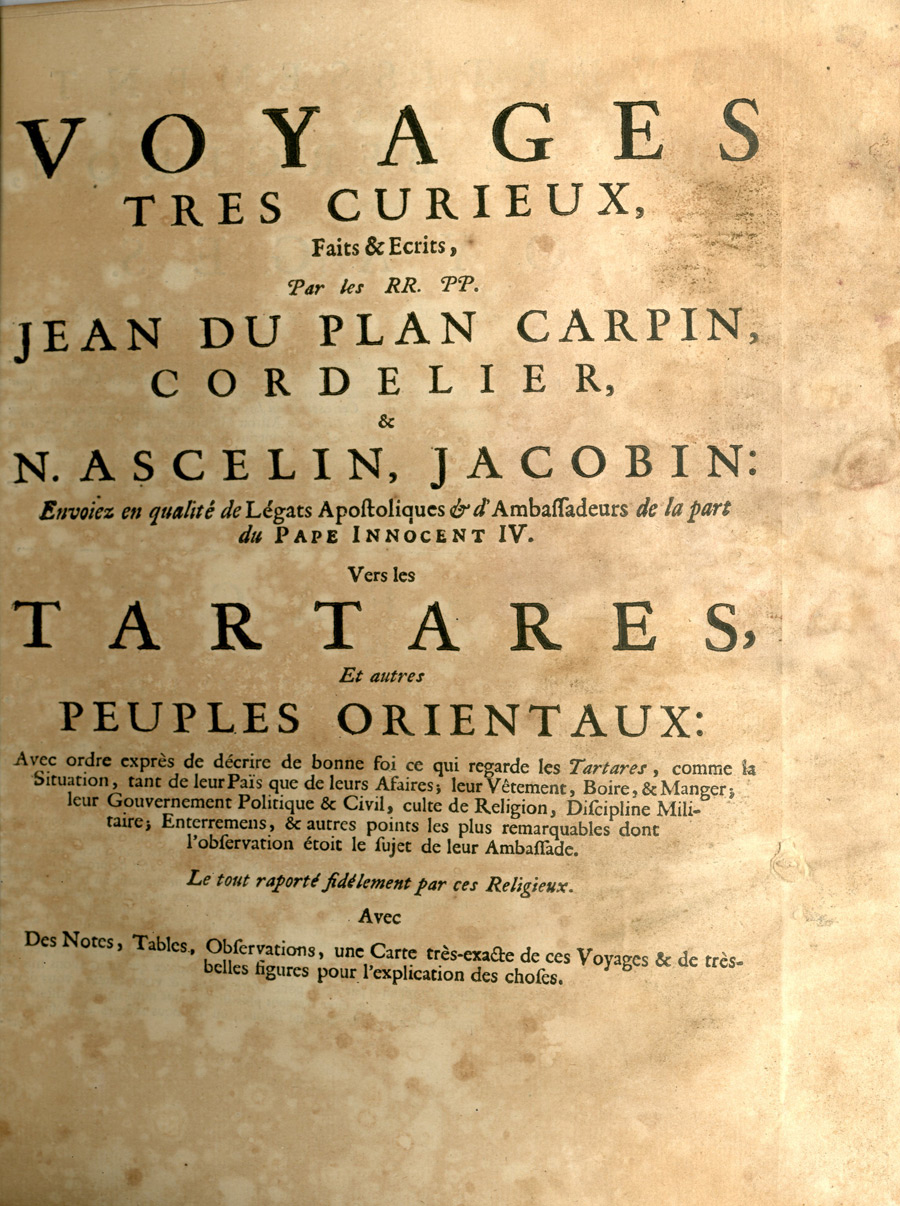When the Tatar forces - as depicted here in this early 18th century anthology of travel writing in French - crossed the Dniepr river to join the Cossack armies in their uprising against the Polish-Lithuanian Commonwealth in 1648, they set in motion a chain of events which would eventually change the map of Europe. One aspect of this was the fate of Eastern European Jewry. In the face of the massacres perpetrated first by the Cossack-Tatar forces, and later by the Swedish and Muscovite armies, many thousands of Jews fled, creating a wave of refugees not only within the Commonwealth, but also in Central and Western Europe and in the Mediterranean basin.
In order to help alleviate this problem, existing regional and intra-regional philanthropic systems came into play. The Lithuanian Jewish council coordinated efforts of the communities which comprised it to help settle the refugees, particularly the elderly, women and children, and to provide them with food, shelter and an income. Vienna acted as a central clearing house for the refugees in central Europe, not only giving them a place to stay but presiding over efforts to raise money for the collapsing Jewish communities of eastern Europe.
The Eastern European Jewish refugees in the Mediterranean basin, which included a high proportion of women, were largely swept up in the huge slave trade of the region. In the mid-seventeenth century, Jewish ransoming activities were conducted according to an agreement between the communities of Venice, Livorno, and Istanbul. This agreement collapsed in the face of the wave of refugees, whose representatives found themselves in competition with those ransoming other Jewish captives and those raising money for the Jewish poor of the Land of Israel. The lion's share of the costs of ransoming the eastern European Jews seem to have been borne by the Jews of Istanbul - a huge financial burden whose effects may have been felt for generations. In contrast, the Jews of eastern Europe managed to reconstruct their lives and their communities relatively quickly, thanks to their close co-operation with the enormously wealthy Polish magnates.
As the refugee crisis drew to an end, some Jews chose to return home to Poland-Lithuania, while others, particularly women, fearful of the dangers of travel, chose to remain where they were and start a new life. The spreading of the Polish-Lithuanian Jewish refugees as far afield as the eastern Mediterranean, the Maghreb, Central Europe and the Atlantic seaboard raised a great deal of interest among the Jewish population already settled there. This acted as a stimulus to Jewish publishing in both Hebrew and Yiddish.
In somewhat similar fashion, the great geographical discoveries of the early modern era and Europe's colonial expansion created a thirst for knowledge about distant places and peoples in many European countries. In response, anthologies of travel literature became a highly popular genre. The images shown here illustrate one such travel anthology - Voyages faits principalement en Asie dans les XII, XIII, XIV, et XV siecles, published by Pieter van der Aa, La Haye 1735. This book reprinted the work of the seventeenth century French geographer, Pierre de Bergeron (1580-1657), who translated into French a number of travel narratives (including that of the Jewish traveler Benjamin of Tudela). The images shown here illustrated a text entitled, l'Histoire des Mongols appelés par nous Tartares, description des coutumes, de la géographie, de l'histoire et des figures marquantes du peuple mongol, which was originally written by the Papal legate to the Mongol Khans, Giovanni dal Piano dei Carpini (in French, Jean du Plan Carpin) in the thirteenth century.


